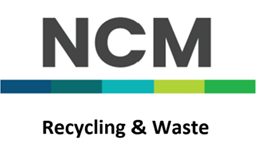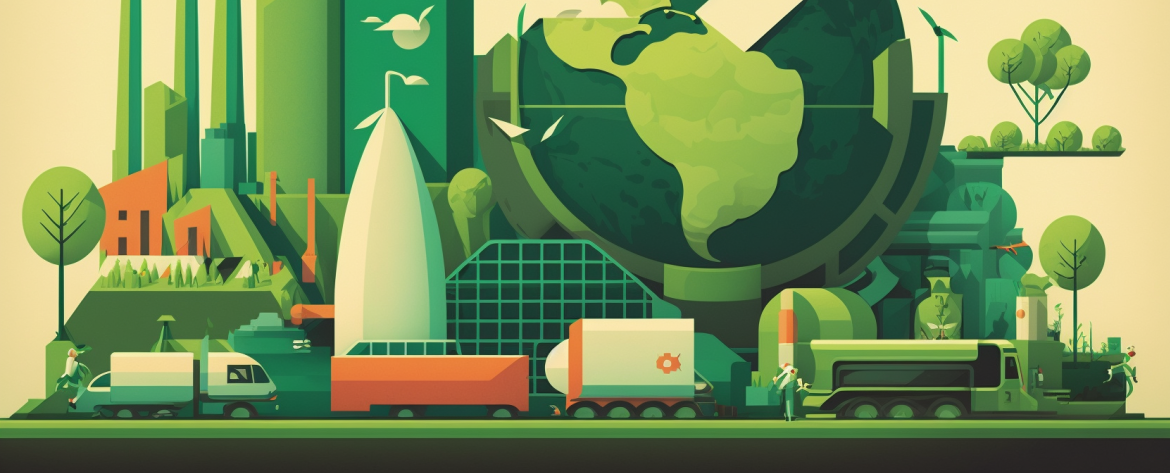
The Journey of Recyclable Materials: From Your Bin to New Products
The journey of recyclable materials is a fascinating and complex process that involves multiple stages and various players. This crucial process ensures that we extract the maximum value from our resources, reduce the strain on our landfills, and contribute to a more sustainable environment. In this blog post, we’ll delve into the path these materials take from your bin to becoming new products.
The Glass Recycling Process
Glass is 100% recyclable and can be endlessly recycled without any loss in purity or quality. This process begins with your household glass waste. Glass bottles and jars are collected from homes, businesses, and glass collection points. After collection, the glass waste is transported to a treatment plant.
At the treatment plant, any non-glass materials are removed. The glass is then crushed into tiny pieces known as cullet. The cullet is melted in a furnace at a temperature of approximately 1500°C. The molten glass is then moulded into new glass products. This process reduces the demand for raw materials, reduces energy usage, and reduces the volume of waste sent to landfill.
The Paper Recycling Process
Paper recycling starts with us collecting it from recycling bins and taking it to recycling centres. There, it is sorted and separated into types and grades. The separated paper is then washed with soapy water to remove inks, plastic film, staples and glue. This mixture is then put into a large holder where it is mixed with water to create ‘slurry’.
By adding different materials to the slurry, different paper products can be created, such as cardboard, newsprints or office paper. The slurry is then spread using large rollers into large thin sheets. The paper is left to dry, and then it is rolled up ready to be cut and sent back to the shops.
The Journey of Recycled Metal
Metal recycling is a bit more complex due to the wide range of metals – from soda cans to car bodies. The process begins with the collection of metal waste from various sources. It is then sorted into ferrous (containing iron) and non-ferrous metals.
The sorted metal waste is then shredded to aid in the melting process. Shredding the metals into smaller parts allows for a more energy-efficient and faster melting process. The shredded metal is then melted in a large furnace. Each metal type has a specially designed furnace depending on its properties.
Once melted, the metal is purified and then solidified before being transported for production of new products. This process not only conserves natural resources but also requires less energy compared to producing new metals from raw materials.
The Life Cycle of Recycled Plastic
Plastic recycling is a complex process due to the many different types of plastics. The journey begins with collection. The collected plastic waste is then sorted according to its plastic type. Once sorted, the plastic is cleaned and shredded into small flakes.
These flakes are then melted and reformed into pellets. These pellets, also known as nurdles, can be used to make new plastic products. It’s important to note that not all plastics are recyclable, which is why reducing and reusing plastic is equally as important as recycling.
The End of the Journey
At the end of their journey, these recycled materials emerge as new products, ready to be used, consumed, and eventually recycled again. It’s a circular process that, if properly followed, can lead to significant environmental benefits. It reduces the strain on our natural resources, saves energy, and decreases pollution.
However, recycling is only one part of the waste management hierarchy, which prioritises waste prevention, followed by reusing, recycling, recovery, and, as the last resort, disposal. While we continue to improve our recycling efforts, let’s not forget the importance of reducing and reusing where we can.
Step 1: Collection and Transportation
The journey of recyclable materials begins in our homes, offices, or public spaces, where we sort our waste into different bins based on material type: paper, plastic, glass, and metal. Once collected, waste management companies like NCM Recycling and Waste Solutions transport these sorted materials to a recycling facility. Here at NCM, we prioritize efficiency and sustainability in our operations, using fuel-efficient vehicles to reduce our carbon footprint during this stage.
Step 2: Sorting and Cleaning
At the recycling facility, the collected materials undergo further sorting and cleaning. Advanced machinery and manual labour help to separate materials based on their physical properties like weight and magnetism. For example, magnets are used to extract iron and steel, while eddy currents can separate non-ferrous metals like aluminium and copper.
Then, the sorted materials are cleaned to remove any contaminants such as food residue or non-recyclable materials. It’s essential to clean recyclable materials thoroughly as contamination can disrupt the recycling process and lower the quality of the recycled product.
Step 3: Shredding and Pulping
Once cleaned, the materials are prepared for recycling. Paper and cardboard materials are soaked in water to create a pulp. This pulp is then screened to remove any staples, glue, or plastic film. Metals and plastics are shredded into smaller pieces to increase their surface area, making it easier to process them in the next stage.
Step 4: Processing and Transformation
The prepared materials then undergo a transformation process. The paper pulp is heated and broken down further into fibres. These fibres are then whitened and mixed with new pulp to strengthen them. Once the mixture is ready, it’s drained, pressed, and rolled into sheets of paper.
For plastics, the shredded pieces are melted and often extruded into the form of pellets, which manufacturers can then mould into new plastic products. Metals are also melted down and poured into moulds to form ingots, which are then rolled into sheets or other forms suitable for manufacturing.
Step 5: Manufacturing New Products
The recycled materials are then transported to manufacturers who turn them into new products. Recycled paper can become newspaper, cardboard, or even toilet paper. Recycled plastic can be transformed into clothing, furniture, or new plastic bottles. Metals can be used to make new cans, car parts, or appliances.
Step 6: Back on the Shelves
The new products made from recycled materials are then packaged and distributed to retailers, ready to be purchased and used by consumers. This is the final stage in the journey of recyclable materials, where they find a new life in a new product.
The journey of recyclable materials is a testament to human ingenuity and our ability to create sustainable solutions. It’s a complex process, but every step is crucial in our fight against waste and our mission to create a sustainable future.
However, the effectiveness of this process relies heavily on the proper disposal and sorting of waste at the source. As consumers, we all have a vital role to play in ensuring that our waste ends up in the right place. By sorting our waste correctly and reducing contamination, we can improve the efficiency of the recycling process and the quality of recycled products.
At NCM Recycling and Waste Solutions, we’re proud to be part of this essential journey. We’re committed to providing effective and efficient waste management solutions and educating our customers about the importance of proper waste disposal and recycling practices.
The Role of NCM Recycling and Waste Solutions
Here at NCM, we take our role in the journey of recyclable materials seriously. We handle the first, crucial step of the process – the collection and transportation of recyclable materials. By implementing best practices and utilising advanced technologies, we ensure that the materials we collect are ready for the next stages in their recycling journey.
We also take a proactive approach in educating our customers about recycling. We believe that the more people understand about what happens to their waste once it leaves their bins, the more likely they are to recycle responsibly.
Beyond the Basics: The Future of Recycling
While the journey of recyclable materials is an effective way to manage waste, there are always ways to improve and innovate. New technologies and methods are continually being developed to make the recycling process more efficient and to increase the types of materials that can be recycled.
One such innovation is the development of advanced sorting technologies. These machines use artificial intelligence and machine learning to recognise and sort different types of materials, improving the efficiency and accuracy of the sorting process.
Another exciting development is the concept of a circular economy, where waste is minimised, and resources are kept in use for as long as possible. This approach goes beyond traditional recycling, emphasising the importance of reducing and reusing in addition to recycling.
Conclusion
The journey of recyclable materials is a long and complex one, but it’s essential for our environment and our future. It allows us to get the most out of our resources, reduces the strain on our landfills, and contributes to a more sustainable world.
At NCM Recycling and Waste Solutions, we’re proud to be a part of this journey. We’re committed to providing efficient waste management solutions, promoting recycling, and supporting our customers in their efforts to recycle more and waste less.
As we look to the future, we’re excited about the possibilities for further innovation and improvement in the recycling industry. We believe that by working together, we can make a significant difference in our world. So, the next time you put your recyclables in the bin, remember the journey they’ll take and the new life they’ll lead. It’s a journey worth making.
Further Reading
Understanding recycling symbols – Recycling symbols appear on lots of everyday items and help us to identify how different types of packaging can be recycled.
The Aluminium Can Advantage – Key Sustainability Performance Indicators for the Aluminium Can
The life cycle of newspapers – The lifecycle of recycled paper can be repeated 4 to 5 times before the cellulose fibres that form a sheet of paper become too short for paper-making.


